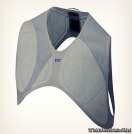题目内容
Sure, it’s good to get along with your teacher because it makes the time you spend in the classroom more pleasant.
And yes, it’s good to get along with your teacher because, in general, it’s smart to learn how to understand the different types of people you’ll meet throughout your life.
“But really, there’s one super-important reason why you should get along with your teacher. When you do, learning bursts right open,” says Evelyn Vuko, a longtime teacher who writes an education column called “Teacher Says” for the Washington Post newspaper.
In fact, kids who get along with their teachers not only learn more, but they’re more comfortable asking questions and getting extra help. This makes it easier to understand new material and do your best on tests. When you have this kind of relationship with a teacher, he or she can be someone to turn to with problems, such as problems with learning or school life, such as bullying.
As a kid in a primary or middle school, you’re at a wonderful stage in your life. You’re like a sponge (海绵), able to absorb lots of new and exciting information. On top of that, you’re able to think about all this information in new ways. Your teacher knows that, in most cases, is very excited to be the person who’s giving you all that material and helping you make it. Remember, teachers are people, too, and they feel great if you’re open to what they’re teaching you. That’s why they wanted to be teachers in the first place—to teach!
Some kids may be able to learn in any situation, whether they like the teacher or not. But most kids are sensitive to the way they get along with the teacher, and if things aren’t going well, they won’t learn as well and won’t enjoy being in class.
1.In the passage, the author mainly talks about _______.
A. how to get along well with others
B. how much the students are expected of to get along with teachers
C. the importance of a good relation with teachers
D. how to make the time in the classroom more pleasant
2.“Learning bursts right open” in the third paragraph really means _______.
A. there’ll be more problems with learning
B. you find an opening to learning
C. learning becomes easier for you at once
D. there’ll be no problems at all with learning
3.Which of the comments is FALSE on teachers and their work according to the passage?
A. Teachers sometimes have the same feelings as students do.
B. Teachers are excited even if you wouldn’t like to accept their teaching.
C. Though few, there are still some students who can learn even if they don’t like the teacher.
D. Having a bad relationship with your teachers does more or less harm to your studies.
Every school has notice boards.Let's see what is on the notice board of an American school.
School Policy ·Fighting, saying bad words and all other behavior will not be allowed ·Do not throw rocks, snowballs or sticks on the school grounds ·Hand in a note or telephone to school if your child will be absent for the day ·Parents and visitors need to check in at the office when entering the school. | Report Card Report card about your school life and work will be given to your parents. Look at the marking key for your school work. MARKING KEY 【评分标准】 Goes beyond grade level standards 4 Meets grade level standards 3 Does not meet grade level standards 2 Making progress Does not meet grade level standards, 1 Not making progress |
Class Announcement【通知】 Testing Dates: The math test in June 12-13 The science test is June 15 Parents Meeting: The next parents meeting is on Friday June 22 at 7:00 pm in the meeting hall. Homework: Please check the Homework Board at the school homepage to find your homework. | After-school program The after-school programs will continue for the year 2012. The programs will be open from 3:30 to 6:00 pm every day. ·3:30-4:30 Homework & Reading ·4:30-6:00 Acitivities If you have any questions, feel free to call the school at 524-9752 |
1.According to School Policy, visitors have to when entering the school.
A.hand in a note
B.call at 524--9752
C.check in at the office
D.telephone to the school
2.From , parents can get information on the parents meeting.
A.School Policy B.Report Card
C.After--school Program D.Class Announcement
3.Report Card shows parents .
A.certain school rules
B.after--school activities
C.plans for classes and tests
D.children's school life and work.
4.Suppose Tony doesn't do well at school but makes progress, he will get______ on the Report Card.
A.1 B.2 C.3 D.4
5.Students do their homework and read books .
A.from 3:30 to 4:30 B.from 3:30 to 6:00
C.from 4:30 to 6:00 D.from 6:00 to 7:00



 nt party. My mum makes the better biscuits in the world, so I decide to ask her for help. Mum taught me some basic step of baking. I insisted on doing most of the baking myself. I thought the biscuits were really well. My only mistake was that I dropped some on the floor after I was packing them up.
nt party. My mum makes the better biscuits in the world, so I decide to ask her for help. Mum taught me some basic step of baking. I insisted on doing most of the baking myself. I thought the biscuits were really well. My only mistake was that I dropped some on the floor after I was packing them up. do with people's character
do with people's character